What is moulding process? Any guess! In this article, we will learn all about moulding process including definition, meaning, different types, advantages, disadvantages, etc. Let’s explore the Moulding process!
What is Moulding? Meaning & Definition
Moulding Process Basics
Let’s start from the moulding process basics. We, humans, are continuously discovering various things over time. All the great inventions of our history have been revolutionary if we think about them now.
- These developments were integral, and according to the requirement it develops with time.
- Manufacturing processes used to be very prolonged and required immense efforts.
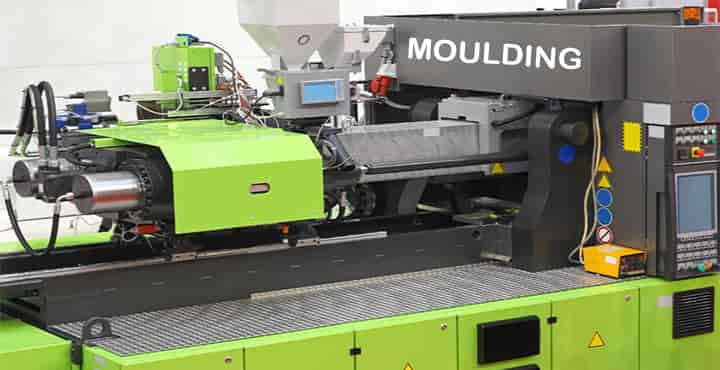
Technology and computers, even airplanes, electronic devices, and automobiles have gone through some revolutionary manufacturing techniques.
History of Moulding
Moulding is a skill that is quite old and precious to us. Even in prehistoric times, our ancestors used it to work in the same way to make various artistic and machinery tools.
- In actual terms, over time, the habit of doing moulding has changed with the utilization of technology and automation.
- A point to be marked is that the concept remains the same throughout time.
- One of the moulding proofs in prehistoric times is the coins and artistic animal structure founded by archaeologists.
This process of carving and casting things continued with specific enhancements in the 14th century itself.
- For a long time, it has been carved out laboriously with manual efforts and hand tools.
- In the 19th century, moulding machines were invented.
- With the increasing demand in the market, manufacturers changed the traditional or conventional moulding styles to produce more complex designs and shapes.
Moulding Meaning & Definition
Today in this excerpt, we are going to introduce the basic definition as well as the meaning of moulding process. Let us kick start this article with the meaning as well as fundamentals of moulding.
Moulding Meaning
Moulding is one of those techniques which have made manufacturing easy. It is a required manufacturing method. As the word suggests, mould is a hollow block or fixed frame containing liquid material to manufacture different stuff.
Moulding Definition
Moulding is coined to denote a process to produce objects by shaping or casting the mould’s required material. Moulding can be defined as a manufacturing technique used to create different shaped materials in various forms like glass, sand, metals, and plastics.
- Moulding is usually used in numerous industries for producing different objects of multiple shapes, sizes, and colors.
- With a wide variety of features available in moulding, it has contributed to human existence.
- Though we humans have only created such methodologies to make our work easy, it is still a revolutionary idea for our lives.
We are going to enlist every sort of detail about the moulding process.
Process of Moulding?
Moulding is a process to create three-dimensional objects in different layers. The openings of mould or frame grid-like structures are filled with pliable material.
- In the first layer, the deposition of casting material and mould material is selected to form a particular part of the article.
- Now the casting material is sequentially deposited in the adjacent layers to compose the object.
- Later, when the liquid state of casting material is changed into a solid state, the grid-like structure and mould material are removed.
Types of Moulding Process with Definition & Explanation
Multiple types of moulding processes exist to form objects for the intended use. Additionally, there are many types of moulding techniques or methods of craft objects. We are going to enlist its main types for your knowledge. Here the list goes on:
Rotational Moulding
Rotational moulding is a process that starts with depositing the heated casting material into the grid frame.
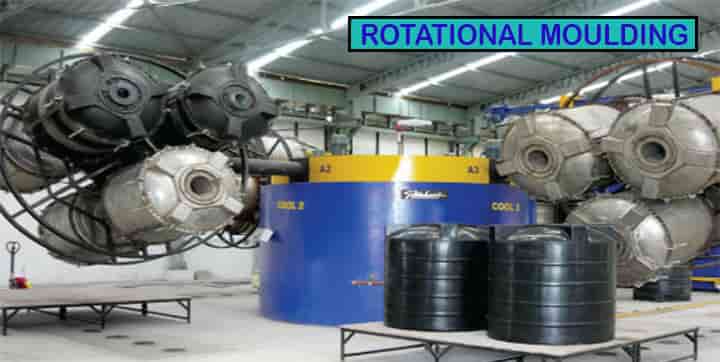
- The frame or grid is heated at a higher temperature and rotated gradually to spread the casting material evenly.
- There are arms to turn the mould continuously at the same height.
- After doing all this frame or mould is set at low temperature or cooled to get solidified. After solidification, the structure is removed.
Typically, this process is utilized to create Hollow products made of plastic with varying thickness and patterns.
Injection Moulding
This type of moulding technique is quite common in which the raw material is in the form of a thermoplastic, and the frame on the matrix is made of metal.
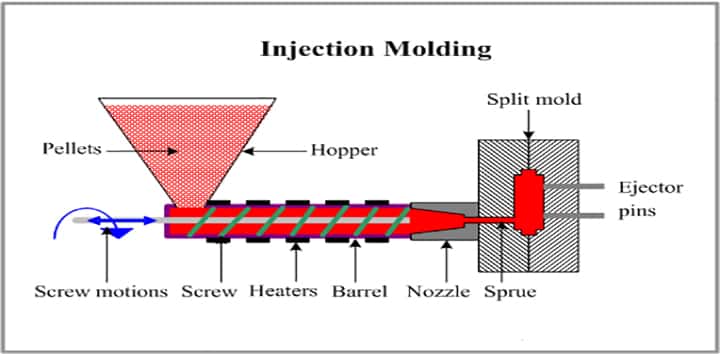
- First of all, the raw material is put into a heating chamber and injected into the grid or matrix.
- This technique is used to create good quality, three-dimensional objects.
- Now, when the material gets chilled and solid defined and has taken the frame’s shape, it is opened, and the product is released.
- Mostly all the plastic items are made using injection moulding.
Compression Moulding
This moulding technique is one of the most labor-intensive but inexpensive methods suitable for large scale production.
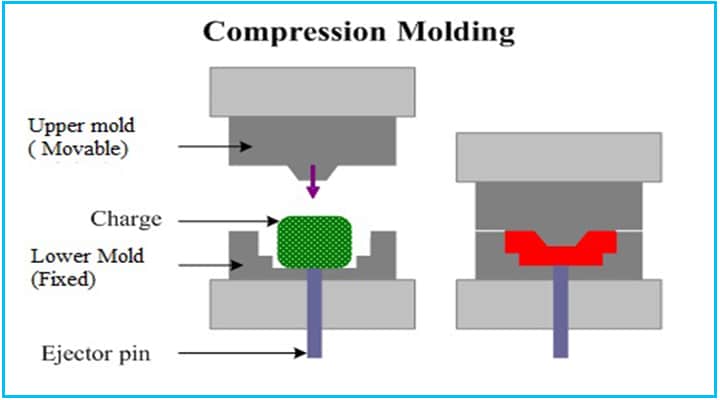
- In this process, the molten casting material is deposited into the mould.
- As the name suggests, to apply pressure on it, a second mould is used to compress the casting material to get into the desired shape.
- After this, the figure is left to get solidified, and then the frame gets removed.
- This type of moulding technique is not suitable for mass production.
Usually, fiberglass thermoplastic and thermosetting resins are the raw materials used in this process.
Extrusion Moulding
Just like compression moulding, it is also used to produce items on a large scale.
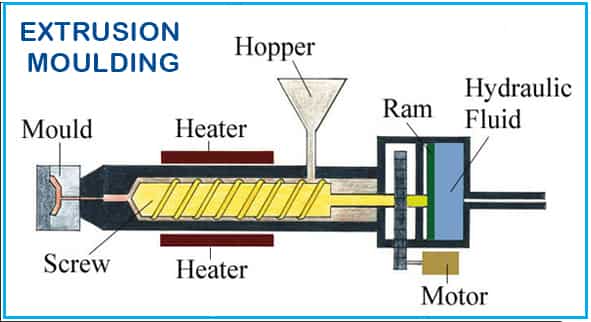
- Often, when the manufacturer wants to create uniform size or area objects, this technique is used.
- The raw material is heated till it reaches to its molten state and then deposited through a die.
- The extrusion is stretched to make it straight.
- To achieve the intended crystal structure, the extruded material is heated at a higher temperature.
Blow Moulding
This technique of moulding is suitable for creating elongated objects such as pipes, milk bottles.
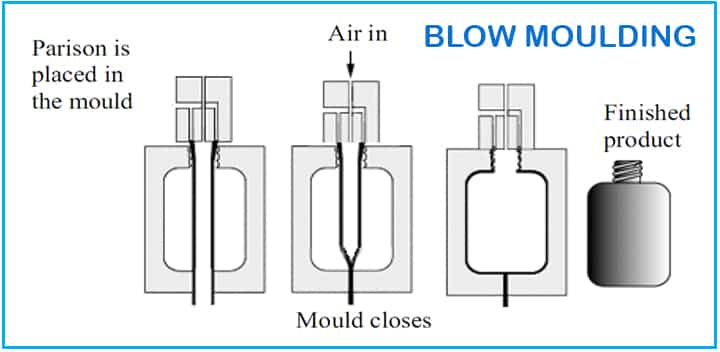
- The casting material is kept under high temperature to get into the molten state.
- When the raw material is deposited into a cold frame or matrix enclosing a tube set in it having any particular shape.
- The tube set is inflation-oriented, and when air is blown, the material takes the form around the box.
- Then, it is left for some time to get cooled. Afterward, it is removed from the matrix.
Casting
Casting is one of the simplest methods to manufacture various things without the usage of complex technologies.
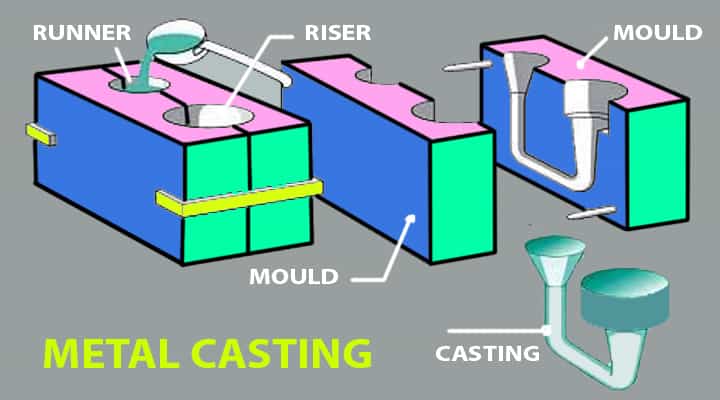
- Simply the raw material is turned into fluid and deposited into the frame.
- The frame is left to get chilled and removed.
- Usually, it is used to manufacture intricate shapes and sizes which require low pressure.
There are some of the more types of moulding performed in the manufacturing industries according to the requirement of materials, and these area,
- Expandable bead moulding,
- Foam moulding,
- Laminating,
- Matched mould,
- Matrix moulding,
- Pressure plug assist moulding,
- Transfer moulding,
- Thermoforming
 ,
, - Vacuum plus assist moulding, etc.
Advantages of Moulding Process
Various moulding techniques have empowered the manufacturing industry to produce more and more goods and products. We are here with some of the advantages of moulding techniques, which includes the following:
Increased production rate
- The moulding techniques have empowered people to produce more products as compared to conventional methods.
- Despite taking much time, moulding techniques have made processes easier for us due to less time required to create the objects; therefore, more products in less time.
- The speed of production is widely dependent on design complexity and size.
Increased efficiency rate
- The efficiency in manufacturing products has gone higher than before. After each cycle time, the whole manufacturing process is known to produce efficient products.
- With the help of these moulding techniques, the manufacturer has seen hike inefficiencies resulting in more business.
Handle complex designs efficiently
- The moulding techniques are designed to handle intricate work.
- To maintain uniformity, these techniques are capable of making millions of identical products.
- The high volume production can maximize the profit as well.
- Even the accuracy and quality are maintained while using the moulding techniques in manufacturing products.
Modulates strength of the product
- Strength is the deciding factor for various parts of the factory.
- The requirement of the product needs to be very clear that being flexible or rigid is in nature.
- These techniques are capable of modulation in the strength of the product for the intended use.
Provides flexibility in the work
- Flexibility is in the sense of complexity e and various features that can be utilized in the products.
- The moulding techniques considered the proper balance in the correct material and preferred shade for any project.
- While creating multiple products, there is an endless variety of features that can be inscribed in the assignment.
- Depending upon the usage, the user should decide required qualities like elasticity, tensile strength, impact strength, etc.
Less wastage
- Due to the appropriate machinery techniques involved in manufacturing, less wastage has been recorded by many surveys across the world.
- Environment sustainability e is going to be maintained while using these moulding techniques to manufacture various objects.
- Eventually, these moulding techniques are designed to reduce the wastage of plastic in the process.
- Still, the company has to take care of its recycling and re-usage to minimize waste.
Lower indirect cost
- Though the machinery cost has increased, the balance was maintained by lesser indirect price, such as labor involvement.
- These moulding techniques help to keep cost efficiency and the production of quality products.
Higher productivity
- Lessening manual intervention will increase productivity than before.
- Due to increased efficiency and production rate and less time requirement, the blend of all these benefits will increase productivity for the particular company or industry.
Unique in nature
- All of the moulding techniques are unique in it.
- Some of them are only limited to produce the same kind of product and yield many types, designs, and shapes.
- The unique nature of each of them stands them out from each other.
Disadvantages of Moulding Techniques
Expensive machinery costs
- While utilizing these moulding techniques will require higher input and higher initial capital investment.
- The maintenance cost will get increased and will be added to the costing.
- Therefore, machinery cost may result in a significant disadvantage for the usage of moulding techniques.
Not suitable for less volume
- Usually, moulding techniques are known to produce products in higher volume.
- Therefore, if you require fewer effects in number, then implementing these moulding techniques will not work.
Uniformity may result in errors
- Sometimes, a minor technical error in the production system can cause massive losses to the organization.
- Difference because of the uniformity maintained in these moulding techniques.
- The risk of mistakes is relatively higher if not appropriately handled.
Uneven technicalities may result in loss
- Even the uneven margin lines for technicalities in a single product will be a reason for wastage and loss.
- Due to automation in the machinery tools, even the smallest mistake will create trouble in the production system.
Secondary surveillance is required
- As human intervention at the secondary level is mandatory.
- Therefore, the organization has to employ some experienced professionals to take care of products at the secondary level.
Huge capital investment
- Most of the moulding techniques can be utilized by big companies that can afford substantial capital investments.
- The machine, tools, and mould can be more expensive.
- Therefore, if you can invest initially, then the output will be worth it.
Conclusion
These were the fundamentals of moulding. We have covered all the basics of moulding, types, techniques, advantages, and disadvantages. We have tried to cover most of the parts; still, there is so much to learn.
